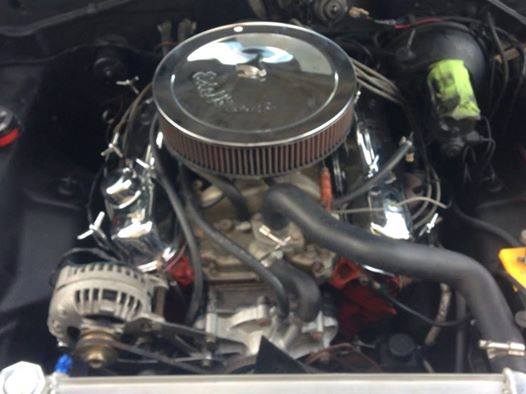Editor’s Note: Real-World Powerplants is a recurring series that profiles engines and engine builds by everyday high performance enthusiasts—hot rod hobbyists with DIY work ethics and real-world budgets.
Mopar’s 318 small-block engine is the ultimate sleeper engine.
One of the most common Mopar V8s of all-time, the 318 is reliable, affordable, and readily available. Since most 318s are extremely durable too, the unassuming little engines make the ultimate foundation for a potent stroker engine.
But that’s not news to Christopher Howard of San Antonio, TX.
“Stroker motors have always interested me, especially a 4-inch stroke in an engine as small as the 5.2L 318,” Howard said. “What I like about stroker motors is all the combinations you can have with them. You can bore (a 318) .040 over and have a 392 and even put a 318 to a 402. You can make a performance engine out of almost anything.”
For Howard, “anything” is the small block 318 that came with his 1972 Plymouth Duster. Since he plans on using the vehicle as a 50/50 drag/Pro Street vehicle, he’s been hard at work stroking the engine out to 390 cubic inches in hopes of achieving at least 450 horsepower and 500-plus ft.-lbs. of torque at the rear wheels.
The current 318 setup features an Eagle Specialties rotating assembly, Edelbrock Performer RPM cylinder heads, Edelbrock Air-Gap intake manifold, COMP Cams hydraulic roller camshaft, and Holley 850 cfm double pumper carburetor with 1-inch spacer. Howard has settled on this combination to reach the 390 cubic inches he’s aiming for:
- K1 Technologies 4340 crankshaft (4-inch stroke)
- K1 Technologies billet H-Beam connecting rods (6.123-inch length)
- KB Pistons forged step dish pistons (23cc) with moly rings
- Clevite race bearings
- Torqueflite 727 transmission with aluminum driveshaft and 3,000 rpm stall torque converter
- ARP fasteners
- Edelbrock Performer RPM ported cylinder heads with 1.5-ratio roller rockers
- Edelbrock Air-Gap ported intake manifold
- Holley Street Avenger 870 cfm carburetor
- 1-inch carburetor spacer
Although it’s important to check clearances on both the top- and bottom-end when building a stroker motor, Howard is confident in the combination of parts he chose.
“Clearances are not a problem in this combination,” he said. “The biggest challenge with this build has been finding camshaft to match the stroker.
He decided on COMP Cams’ Xtreme Energy hydrualic roller camshaft, XR286HR, to get the throttle response he wants without sacrificing top-end power at the track. The .544-inch lift cam should provide all the power Howard’s Duster needs to finish off the competition at the dragstrip.
While choosing the right parts, particularly for the rotating assembly, is critical in building a stroker motor, Howard is quick to point out the importance of preparing the engine block itself. Sonic testing uses sound waves to determine whether the cylinder wall thickness to determine whether any material can be safely removed. “(The block) has to be sonic tested to make sure it is capable of handling an overbore,” he said. “Not many people realize that you have to (do that). They think about the parts more than they do the block.”
Like any project, the Plymouth Duster and its real-world powerplant are always a work in progress.
“I might lower the compression and stick a 6-71 Roots blower on it,” Howard said.
Yet one more upgrade option for Mopar’s little sleeper engine: the small block 318.


Thanks very much 🙂
Can the same be done to a 1998 5.9l 360 block. Because I’m looking to turn this factory engine (which the factory rates it as only having 245 h.p. which in my eyes just not enough since this engine came out of a 3 ton p/u truck.) into a stroker, and getting a scat 4″ crankshaft, forged pistons and forged connecting rods. And I still have’nt gotten to the cylinder heads yet. Any recommendations. I was planning on using a set of harland-sharp roller rockers, w/a 1.7 ratio.as far as the cam goes I got a cam from hughes engines, it’s spec’s are: 209/215, but I’m not sure if this cam is the right one.
Not sure on the cam. I do suggest the Indy X heads prepared by IMM engines At around $1400 or if you can wait maybe Trick flow heads have some new mopar small block heads out 2018 that look promising. The 1.7 ratio rockers may be trick to stop binding.